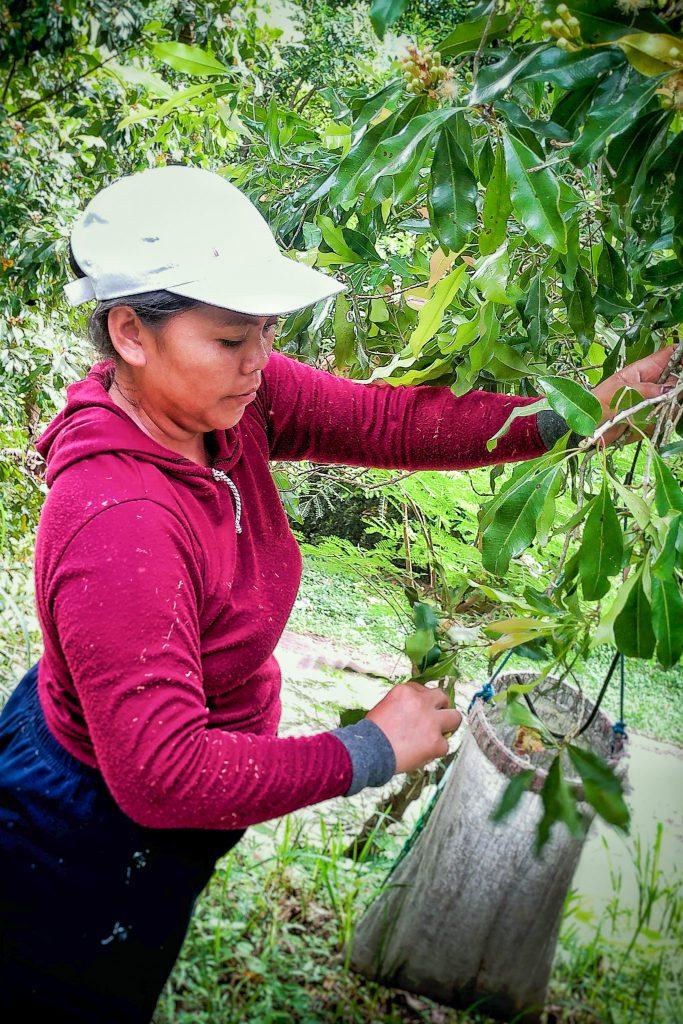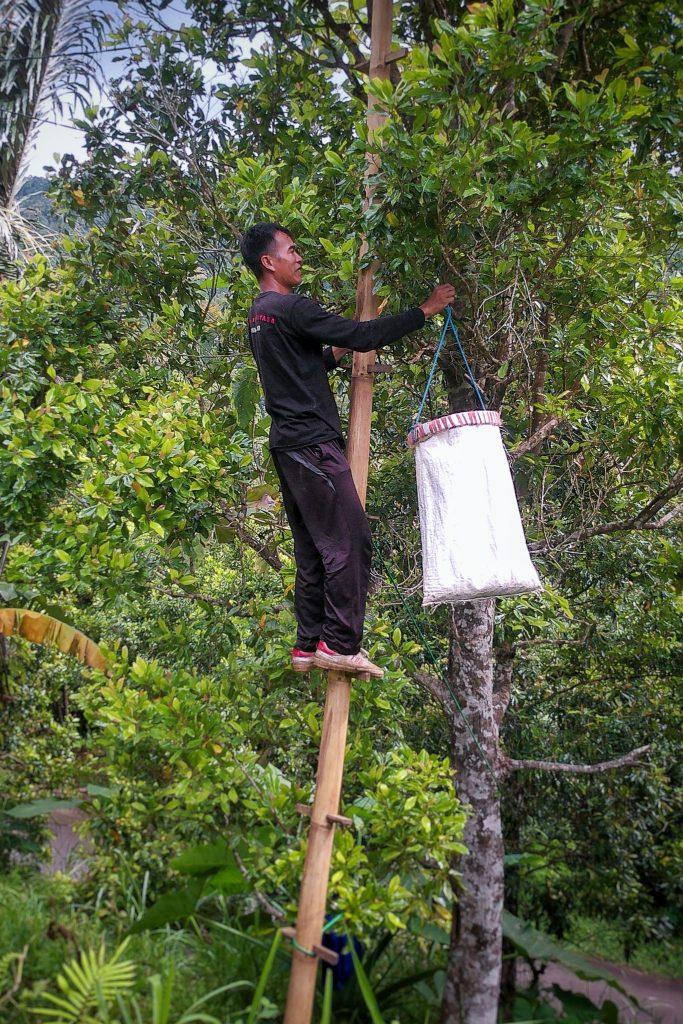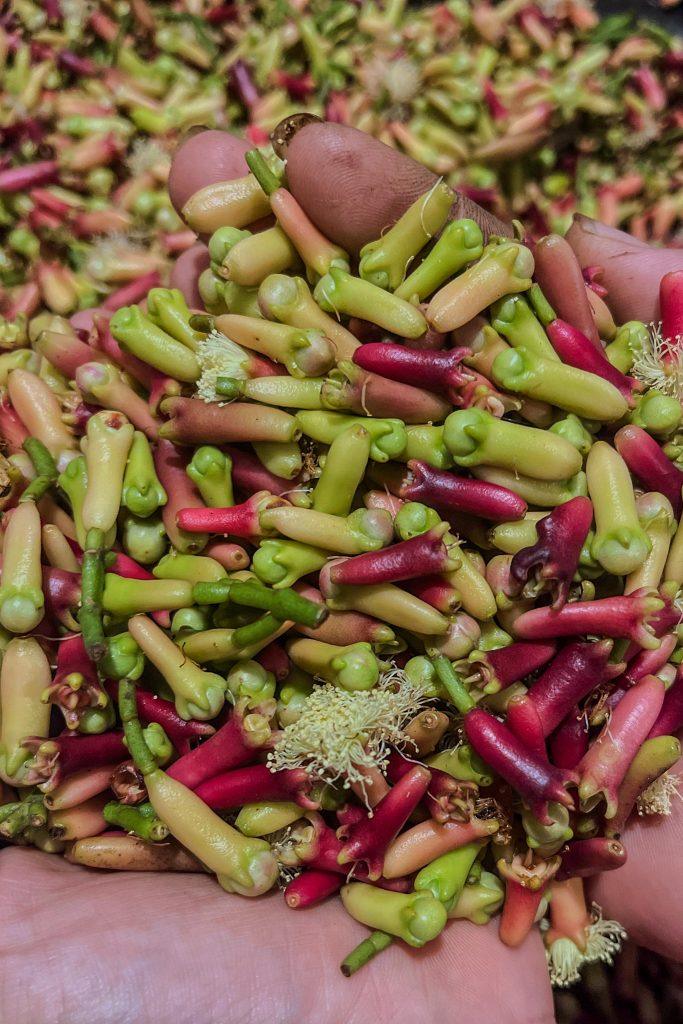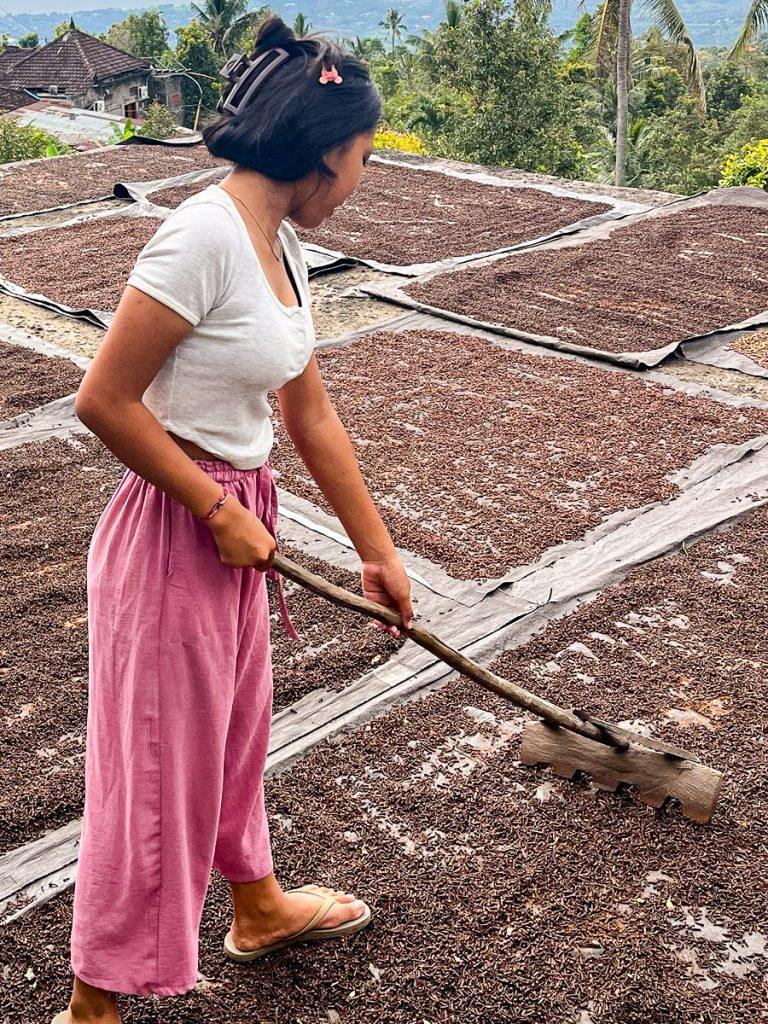Clove, small yet potent, has crossed centuries and continents. Native to the Maluku Islands in Indonesia, it was once at the heart of global trade routes. Already used in China as early as the 3rd century BCE, it also featured among the prized spices traded in Europe during the Middle Ages. Its strong aroma, pungent taste, and medicinal properties made it a strategic resource.
Article by Damien Lafon and photographs by Sandra.


A Seasonal Cycle in Bali
In Bali, clove harvesting takes place each year from June to September, mainly in the northern part of the island. In mountainous areas such as Buleleng and around Singaraja, families organize their entire schedule around this seasonal rhythm. Early in the morning, men and women climb the trees using traditional bamboo ladders. This harvesting activity is called “ngalap cengkeh.” It requires patience, agility, and coordination. Each flower bud is picked by hand to avoid damaging the tree. The harvest is sorted on-site right after collection.
Preparing Cloves for Market
After harvesting, the cloves are separated from their stems in a process known locally as “ngepik cengkeh.” This step is essential because the stems are sold separately. It’s a manual process, often carried out by families, sitting on woven mats. Then, the cloves are sun-dried on special drying mats called “sidi.” This process can take several days. Drying is critical: poorly dried cloves lose both quality and market value. Weather plays a significant role. During the rainy season, drying becomes more difficult and sometimes risky.
Did you know?
Cloves are not seeds but dried flower buds, harvested just before blooming.


Between Market Price and Rural Know-How
In Singaraja, prices vary greatly depending on whether the clove has been dried or not. In 2025, a kilogram of dried cloves sells for around 115,000 rupiah, while fresh cloves only fetch about 35,000 rupiah. This difference pushes farmers to master every step of processing, despite the challenges of weather. Most sales go through local middlemen. At Kampung Tinggi, a cooperative collects, sorts, and resells cloves to factories. Farmers can sometimes negotiate directly, but the large quantities required by industry make it difficult for small-scale growers.
Clove: A Valuable Resource for Health
Beyond the kitchen, cloves are well known for their medicinal properties. Rich in eugenol, they have antiseptic, anti-inflammatory, and anesthetic effects. They’re often used to relieve toothaches and digestive issues. Moreover, studies have shown their benefits for liver health and the immune system. Whether in infusions, essential oils, or powder, cloves are widely used in traditional medicine across Southeast Asia and beyond.
Did you know?
In Indonesia, cloves are used in kretek, a traditional flavored cigarette popular throughout the country.
Toward Sustainable Clove Production
Faced with unstable prices and global competition, some communities are turning to more sustainable models. Local training programs promote agroecological practices, and small-scale processing initiatives are emerging—producing essential oils, soaps, or clove-based cosmetics.
These projects help add value to the farmers’ work and diversify income sources. Today, in Bali and beyond, the clove remains a living resource, balancing ancestral traditions with new agricultural transitions.
Follow us on Instagram and Facebook to stay informed and support our media via www.helloasso.com
This article may interest you: The cork oak of Portugal, a national pride
